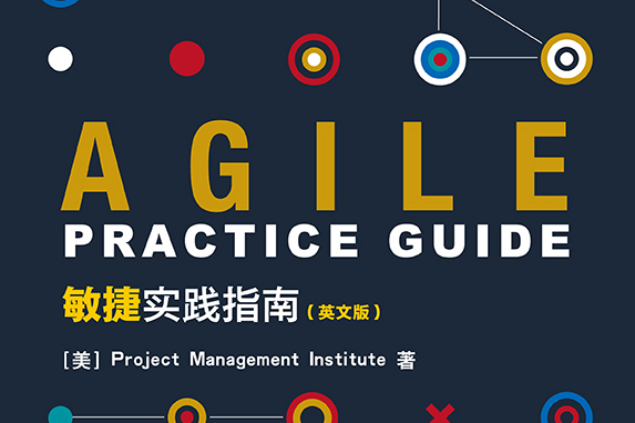目錄
Table of Contents
1. Introduction............................................................................................................................1
2. AN INTRODUCTION TO AGILE......................................................................................................7
2.1 Definable Work vs. High-Uncertainty Work......................................................................7
2.2 The Agile Manifesto and Mindset.....................................................................................8
2.3 Lean and the Kanban Method.........................................................................................12
2.4 Uncertainty, Risk, and Life Cycle Selection....................................................................13
3. LIFE CYCLE SELECTION.............................................................................................................17
3.1 Characteristics of Project Life Cycles.............................................................................18
3.1.1 Characteristics of Predictive Life Cycles...........................................................20
3.1.2 Characteristics of Iterative Life Cycles..............................................................21
3.1.3 Characteristics of Incremental Life Cycles........................................................22
3.1.4 Characteristics of Agile Life Cycles....................................................................24
3.1.5 Agile Suitability Filters........................................................................................25
3.1.6 Characteristics of Hybrid Life Cycles.................................................................26
3.1.7 Combined Agile and Predictive Approaches......................................................27
3.1.8 Predominantly Predictive Approach with Some Agile Components.................28
3.1.9 A Largely Agile Approach with a Predictive Component...................................28
3.1.10 Hybrid Life Cycles as Fit-For-Purpose..............................................................29
3.1.11 Hybrid Life Cycles as Transition Strategy........................................................30
3.2 Mixing Agile Approaches................................................................................................31
3.3 Project Factors That Influence Tailoring........................................................................32
4. IMPLEMENTING AGILE: CREATING AN AGILE ENVIRONMENT.................................................33
4.1 Start with an Agile Mindset............................................................................................33
4.2 Servant Leadership Empowers the Team.......................................................................33
4.2.1 Servant Leader Responsibilities.........................................................................34
4.2.2 Role of the Project Manager in an Agile Environment.......................................37
4.2.3 Project Managers Use Servant Leadership........................................................38
4.3 Team Composition...........................................................................................................38
4.3.1 Agile Teams.........................................................................................................39
4.3.2 Agile Roles...........................................................................................................40
4.3.3 Generalizing Specialists......................................................................................42
4.3.4 Team Structures..................................................................................................43
4.3.5 Dedicated Team Members..................................................................................44
4.3.6 Team Workspaces...............................................................................................46
4.3.7 Overcoming Organizational Silos.......................................................................47
5. IMPLEMENTING AGILE: DELIVERING IN AN AGILE ENVIRONMENT.........................................49
5.1 Charter the Project and the Team...................................................................................49
5.2 Common Agile Practices.................................................................................................50
5.2.1 Retrospectives.....................................................................................................50
5.2.2 Backlog Preparation...........................................................................................52
5.2.3 Backlog Refinement............................................................................................52
5.2.4 Daily Standups....................................................................................................53
5.2.5 Demonstrations/Reviews....................................................................................55
5.2.6 Planning for Iteration-Based Agile.....................................................................55
5.2.7 Execution Practices that Help Teams Deliver Value..........................................56
5.2.8 How Iterations and Increments Help Deliver Working Product.........................57
5.3 Troubleshooting Agile Project Challenges.....................................................................57
5.4 Measurements in Agile Projects.....................................................................................60
5.4.1 Agile Teams Measure Results............................................................................61
6. ORGANIZATIONAL CONSIDERATIONS FOR PROJECT AGILITY...............................................71
6.1 Organizational Change Management.............................................................................71
6.1.1 Drivers for Change Management........................................................................73
6.1.2 Readiness for Change.........................................................................................73
6.2 Organizational Culture.....................................................................................................75
6.2.1 Creating an Environment of Safety.....................................................................75
6.2.2 Assessing Culture...............................................................................................75
6.3 Procurement and Contracts............................................................................................77
6.4 Business Practices..........................................................................................................79
6.5 Multiteam Coordination and Dependencies (Scaling)...................................................80
6.5.1 Frameworks........................................................................................................80
6.5.2 Considerations....................................................................................................80
6.6 Agile and the Project Management Office (PMO)...........................................................81
6.6.1 An Agile PMO is Value-Driven.............................................................................81
6.6.2 An Agile PMO is Invitation-Oriented...................................................................81
6.6.3 An Agile PMO is Multidisciplinary......................................................................82
6.7 Organizational Structure.................................................................................................83
6.8 Evolving the Organization...............................................................................................84
7. A CALL TO ACTION....................................................................................................................87
ANNEX A1
PMBOK? GUIDE MAPPING.............................................................................................................89
ANNEX A2
AGILE MANIFESTO MAPPING........................................................................................................97
ANNEX A3
OVERVIEW OF AGILE AND LEAN FRAMEWORKS...........................................................................99
APPENDIX X1
CONTRIBUTORS AND REVIEWERS..............................................................................................115
APPENDIX X2
ATTRIBUTES THAT INFLUENCE TAILORING................................................................................119
APPENDIX X3
AGILE SUITABILITY FILTER TOOLS..............................................................................................125
REFERENCES...............................................................................................................................139
BIBLIOGRAPHY............................................................................................................................141
GLOSSARY...................................................................................................................................149
Index..........................................................................................................................................157
內容簡介
本書是
美國項目管理協會新發布的敏捷實踐標準,它是理解、評估和使用敏捷和混合的敏捷方法的資源。該實踐指南為何時、何地以及如何套用敏捷方法提供指導,並為希望增強敏捷性的實踐者和組織提供實用工具。本指南是與PMI其他標準一致,包括項目管理知識體系指南(PMBOK指南第六版),是PMI與敏捷聯盟合作開發的成果,是PMI推出的敏捷認證教材之一。

